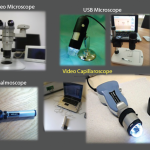ACR Convergence 2021—Scleroderma represents a challenge for many rheumatologists: The disease is rare, the onset of symptoms can be subtle, and the condition has few effective treatments. In the Review Course held during ACR Convergence 2021, Laura Hummers, MD, MSc, clinical director of the Division of Rheumatology, Johns Hopkins, and co-director of the Johns Hopkins Scleroderma Center, Baltimore, provided an update on the extra-pulmonary manifestations of scleroderma and the best ways to approach management of these issues.
Limited vs. Diffuse Cutaneous
Dr. Hummers began her talk with a discussion of limited cutaneous vs. diffuse cutaneous systemic sclerosis. In patients with limited cutaneous disease, Raynaud’s phenomenon is often the first sign of disease and can precede other signs and symptoms by a number of years.
Patients with limited cutaneous disease tend to have more severe vascular issues, such as pulmonary arterial hypertension and digital ulcers, compared with patients with diffuse cutaneous disease. Although autoantibodies directed against centromere are the most common finding in patients with limited cutaneous systemic sclerosis, other autoantibodies that may be present in these patients include anti-Th/To and anti-U1 RNP antibodies; anti-U3 RNP antibody (i.e., fibrillarin), anti-Pm-Scl antibody, and anti-Scl-70 antibody (i.e., topoisomerase).
The vast majority of patients with limited cutaneous disease don’t need therapy directed at skin involvement; this condition tends to be confined to sclerodactyly and does not require systemic immunosuppression.
For patients with diffuse cutaneous systemic sclerosis, the skin involvement tends to be inflammatory and patients often recall the day they noted onset of puffy hands and feet. Unlike limited cutaneous disease, Raynaud’s phenomenon in patients with diffuse cutaneous disease can coincide with, rather than precede, the onset of skin disease, and cutaneous involvement can sometimes predate the appearance of Raynaud’s. The two autoantibodies typically seen in diffuse cutaneous disease are anti-Scl-70 antibody and anti-RNA polymerase III antibody.
Although patients with autoantibodies to Scl-70 tend to have a variable course of skin involvement, patients with antibodies directed against RNA polymerase III usually have a fairly consistent, progressive course. Thus, if a patient is seen when skin involvement is still considered limited (i.e., distal to the elbows and knees) but has antibodies against RNA polymerase III and is showing rapid worsening of skin involvement, it would be reasonable to consider early initiation of systemic treatment.
Dr. Hummers noted that testing for antibodies to RNA polymerase III is important because, in addition to predicting the clinical course of skin disease, these antibodies are associated with an increased risk of scleroderma renal crisis and of concurrent malignancy.



